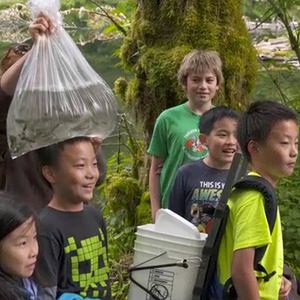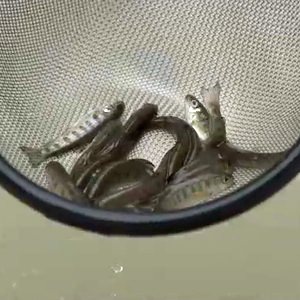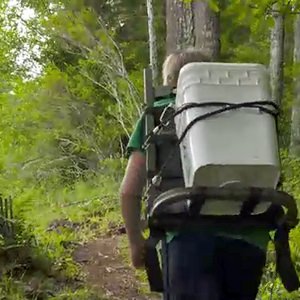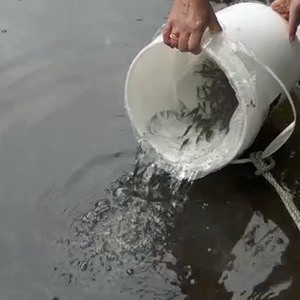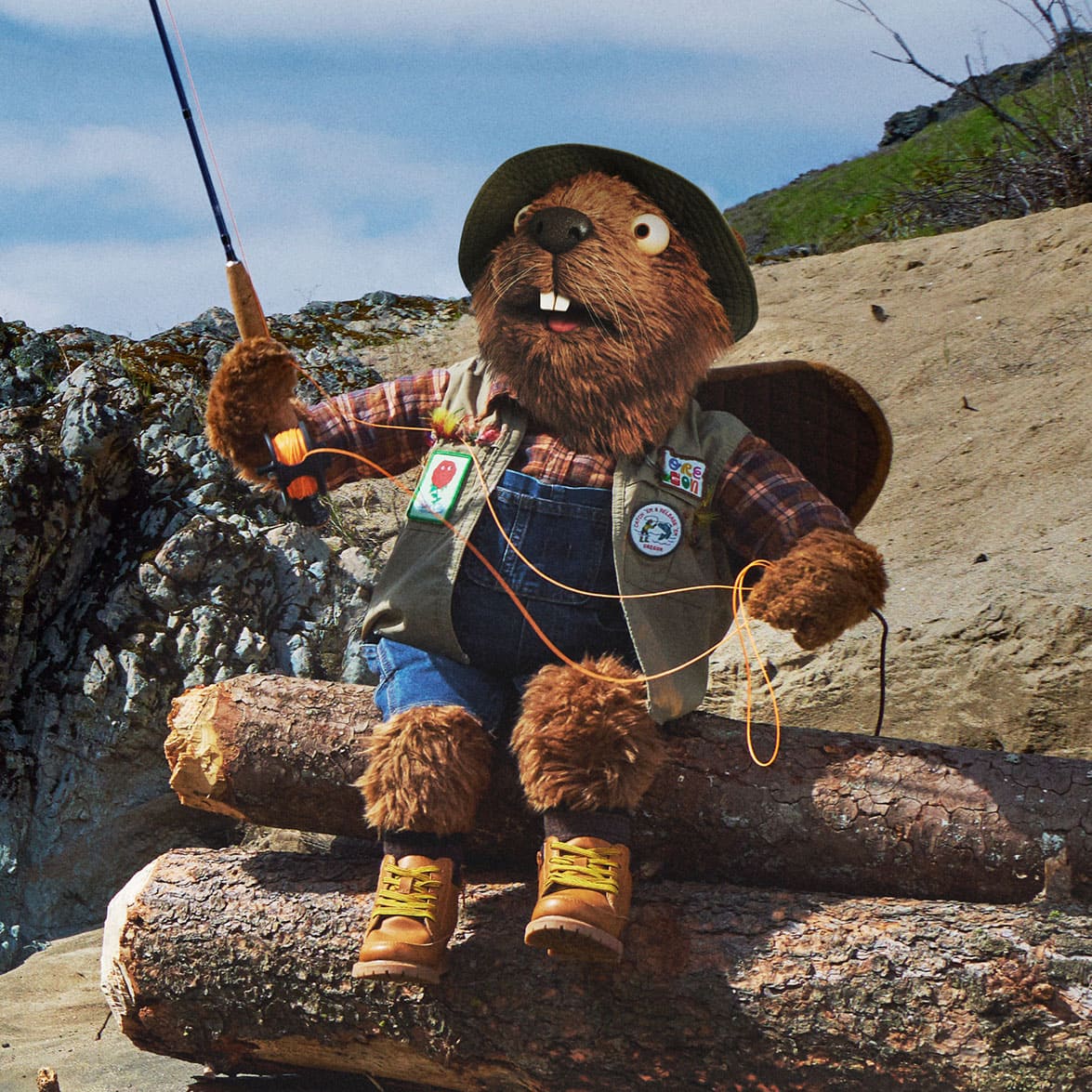You know spring has arrived when anglers begin casting lures for rainbow trout.
That’s also the signal for the annual Battle Lake Trout Hike.
“It’s the only hike-in lake on the district that we stock with fish,” says Robert Bradley, a fishery biologist for the Oregon Department of Fish and Wildlife. “I have an email list to notify folks when we have a project coming up and can use some help. This is one of the most popular because it draws in lots of youngsters too and it’s so easy anyone can do. Folks who show up are most welcome to help.”
The annual Trout Hike is five years old. It’s a numbers-game starting with the 5,000 baby trout.
“These rainbows are raised at the N. Fork Nehalem Hatchery and are just a year old,” says Bradley. “We use buckets with a plastic liner and scoop up 250 of the three-inch trout and place in each bucket.”
Each loaded bucket weighs 35 pounds and gets harnessed to a backpack and then slung over the shoulders of each volunteer packer — that’s when the real work begins! Anglers of all ages lend a hand to deliver baby rainbow trout, going the extra mile with remarkable energy, enthusiasm and a can-do spirit.
While it is less than a mile up a forest trail to reach Battle Lake, it’s mostly an uphill climb. But here’s the good news: it’s all downhill coming back!
In Oregon, most trout stocking operations — especially of legal-sized rainbow trout — are done by truck in short bursts of water.
But for more remote areas it’s a very different story: for real remote and hard to reach lakes it’s a stocking program by air.
For one week every other summer, Oregon’s Cascade Mountain silence is broken when a Bell U1H1 (owned and operated by Columbia Basin Helicopters of Baker City) helicopter takes flight with a load of “flying trout.”
Chief pilot Dave McCarty logs more than 22,000 hours in the chopper and said that he wouldn’t trade the week-long adventure for any other job.
“I love this job! I see the entire cascades in one week and it is just amazing! I approach each lake by looking it over first, seeing which way the riffles are blowing on the water,” he says. “If you get turbulence or downdraft you can feel it dragging you a bit, but for the most part it flies real nice.”
McCarty pilots up to four flights a day during the week long project had ground support crews scurrying into action on his return to the base.
On the ground, tens of thousands of baby rainbow, cutthroat and brook trout are loaded aboard a special unit called the “Aerial Stocking Device” or ASD. ODFW engineers built the fish-hauling unit back in 1997.
Ground crews load up to 400 of the three-inch long trout into each of 30 aerated tanks on the remote controlled device. The device sports a rear tail fin and an aerodynamic nose that lend a familiar look, like a miniature “space shuttle.”
The project is funded through the sales of Oregon angling licenses and tags. Managers said that for every dollar that is spent on the week-long aerial trout stocking of Oregon’s high lakes generates an additional $16 to the Oregon economy by the anglers and campers who journey to the remote areas.
Oregon Department of Fish and Wildlife’s “aerial stocking program” delivers tens of thousands of so called “flying fish” on time and on target into nearly 400 high lakes. It’s a project that provides unique Oregon angling opportunities to those willing to go the extra mile and find adventure.
Meanwhile, back at Battle Lake, ODFW’s Whitney Crowell receives each bucket with a smile. She places the bags of fish in the lake so the babies can adjust to the warmer lake water.
“We want to give them a little time to acclimate,” notes Crowel. “So we put a little bit of lake water in the bag and then give them some time to adjust.”
Bradley says that Battle Lake is a fine new home for the trout, “The lake is not large — about 3 acres — and sits in a bowl in the folds of the coast range mountains in the Nestucca River basin. The lake is fed by springs and it’s fairly deep. There’s lots of downed wood and on a sunny day there’s pretty good insect hatches that go on in here. All in all, it really is pretty good habitat.”
It all adds up to a unique contribution from volunteers, plus a terrific opportunity for youngsters to lend a hand and make their plans for a return visit.
Trout fishing really is contagious and can really draw a crowd any time of year. According to ODFW spokesperson Jessica Sall, “Trout is the number one game fish in the state of Oregon. You can walk or bike to a neighborhood pond and fish; you can drive up the mountain and have a beautifully framed lake with Mt Hood. Trout fishing reaches all corners of the state.”
You can learn all about trout fishing through a new ODFW page. Consider it one-stop site that teaches you the ins and outs to catch a trout in Oregon each day of the year.
